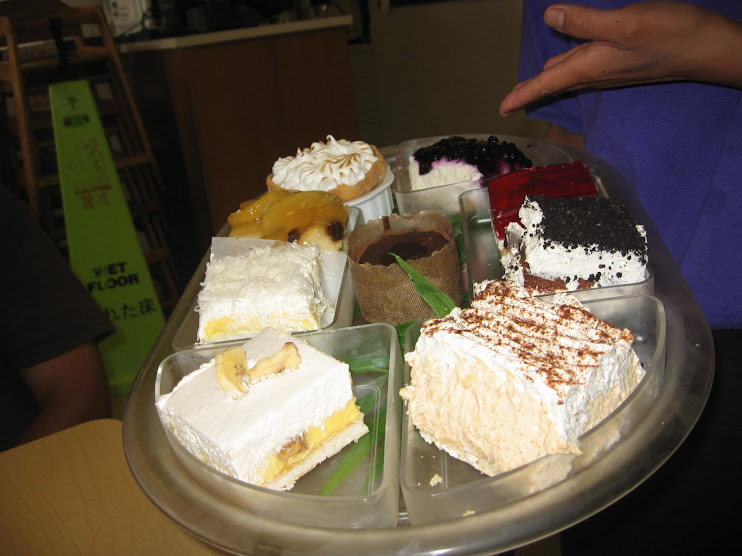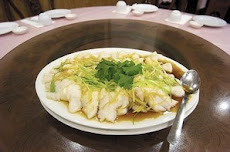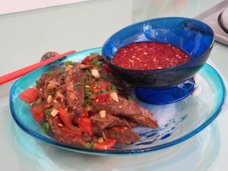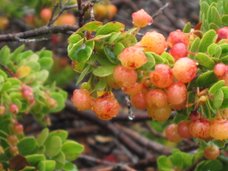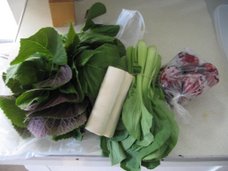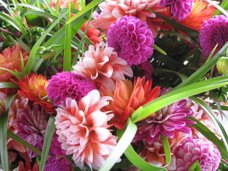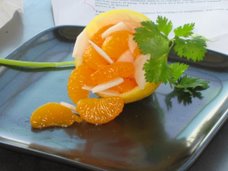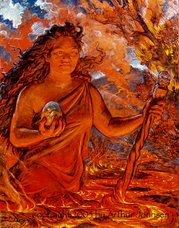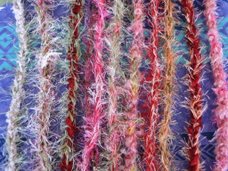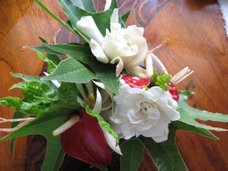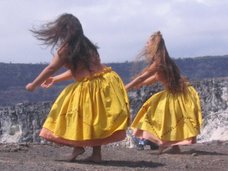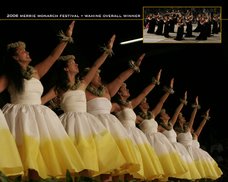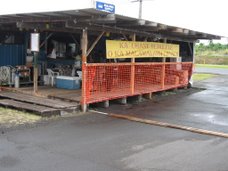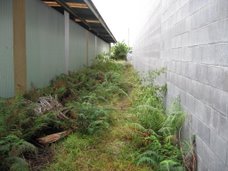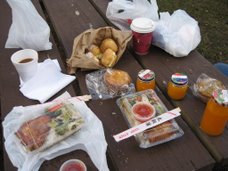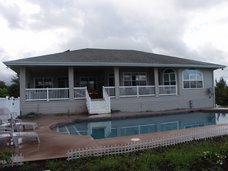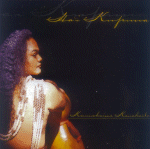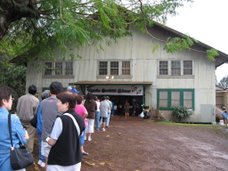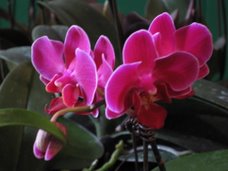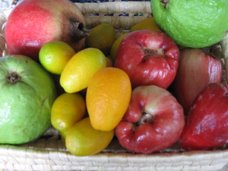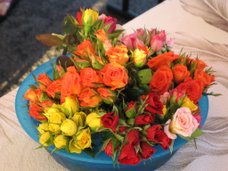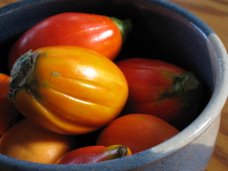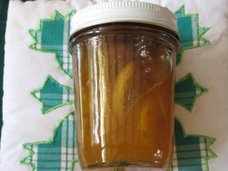Monday, December 10, 2007
Soon Du Boo (also Sundubu), Spicy Korean Tofu Soup
I felt compelled to thoroughly research how to make this soup and then I went right to the source, a Palama Market cashier. The cashier gave me an important tip. She advised me to use ko choo garu, the dry ground red chili pepper powder and NOT ko choo jang, the bottled red chili pepper sauce, to make Soon Du Boo.
I then had a looonng, informative and enjoyable conversation with my friend, KoreanWiz, (see link to her site at left) about the best Korean restaurants in Hawai'i and Korean food in general, I felt revitalized to continue my quest to make a decent Soon Du Boo. KoreanWiz just notified me that another spelling of Soon Du Boo is Sundubu.
Several attempts later, following is my version of Soon Du Boo. Being Chinese, I had to add dried tangerine peel (kwo pay) because I feel it complements the spiciness well. I also like onions in my soup so I hope I am not committing heresy by including them here. While the soup is bright red it is not so much hot as pleasantly spicy.
You can make this into a meatless soup by using just tofu and substituting either vegetable broth or water for the chicken broth. This is one of those versatile soups that can be made with what's on hand. Please do not be put off by the list of ingredients. Most of these ingredients are generally on hand in local kitchens. The soup goes together faster than almost any other soup I can think of.
Soon Du Boo
also spelled "Sundubu"
photo at left on top
First create the sauce which will be divided into thirds and used for the meat or seafood marinade, the soup seasoning and then the dipping sauce (Yang Yohm Jjang):
2 T. ko choo garu (which is dry ground red chili pepper powder sold in large 1 lb. bags at Palama Market or Don Quixote. Do not substitute ko choo jang which is a bottled, seasoned red chili pepper sauce or red chili flakes, which would be too hot)
3-4 small red chili peppers with seeds, finely chopped
2 T. miso, Korean or Japanese
2 T. sesame oil
3 T. toasted sesame seeds, preferably ground with a sesame grinder. If you don't have a grinder you can use a mortar and pestle and absent that, a spoon and a bowl to crush the seeds.
3 T. soy sauce
3 cloves of garlic, peeled and mashed with the bottom of a cleaver or a spoon
1 tsp. sugar
3 green onions, sliced thinly
2 pcs. of dried tangerine peel
Combine the above and then divide equally into three small dishes, set aside.
Make the Soup.
1/2 to 1 lb. total weight of 3/4 inch cubed, boneless meat (pork, chicken, beef) and/or seafood (shrimp, mussels, clams) or a combination of both
1 round onion cut in the middle on the "equator" and then sliced into 1/8" slices from the stem to the "equator"
1 container of drained, silken or soft tofu, Soon Du Boo (I like House brand which is a Japanese tofu, widely available or you can use the authentic Korean tofu that comes in tubes at Palama Market) cut into 1 inch cubes
1 can of Swanson's chicken broth
1)Use the first portion of seasoning sauce to marinate the meat or seafood. Use your hands to massage the sauce in. Chill for at least 1/2 hour.
2)Using a Dutch oven or similar heavy pot, heat 2 T. of oil and 1 t. of sesame oil on High. Lightly brown first the onions and then the meat. Do not drain the marinade off the meat. Add the seafood last if you are using seafood.
3)Add the second portion of seasoning sauce with the tofu (careful not to break the cubes) and the broth over everything in the pot. Bring to a boil then turn down to a high simmer. Let cook for 1/2 hour with a lid on.
Serve the soup with a bowl of hot white rice and the remaining third of the seasoning sauce in a small dish for dipping.
Strictly optional, but the traditional way to serve this, is by dropping a raw egg onto the bubbling and boiling soup when it's brought to the table in an earthenware or cast iron vessel. Can garnish with more sliced green onions and strips of grilled meats like bulgogi, kal bi, pork or chicken.
-foodiewahine
____________________________________________________________________
A big Mahalo to KoreanWiz for linking my blogsite to her website and mentioning this recipe! If you are at all interested in Korean tv dramas, her site is THE place to go. KoreanWiz started her website six years ago before the English-speaking world caught the craze.
Saturday, November 17, 2007
"Entertaining Island Style" by Wanda A. Adams
Wanda's first cookbook "Island Plate" quickly sold out its first three editions and is in its fourth printing. Both cookbooks are available on amazon.com. ( Entertaining Island Style is 10. on amazon.com If you order 25. or more in books then shipping is FREE, even to Hawai'i!) and bookstores locally. At the end of this post is the description of her second cookbook from Borders online.
It was great fun to work on the shoot and I learned alot from the food and photo pros on the crew. My cousin, EB, asked me for a list of favorite recipes I've tried from the book so far (I got a sheaf of some of the recipes earlier when working on the shoot):
Cozido Soup, Portuguese Kale and Sausage p. 47 (hearty and quick)
Nibuta Pork p. 71 (great sliced over saimin, ramen)
Furikake Salmon p. 77 (very popular restaurant item)
Okazuya Style Fish Cake p. 107 (from a previous Advertiser article)
Steak Poke p.124 (Hand's down winnah. Wanda said she made it for a tv appearance on Andy Bumatai and the tv crew wiped it out. Photo on the top left of this posting)
Prune Cake and 7 min. icing p. 129 and 130 (moist, better even the next day when the spices have time to mellow)
Soft Haupia Custard p. 132 (very yummy, very versatile sauce or filling for cakes, etc.)
Pineapple Cream Cheese Pie p. 144 (my favorite dessert from the book)
Swedish Crepes p. 149 (easy, perfect crepes)
-foodiewahine
Borders' description on their site of Wanda's cookbook:
Entertaining Island StyleBibliographic Data: Hardcover, 24 Pages, December 2007Author: Adams, Wanda A.List Price: $15.
Everyone loves a luau! And with the help of "Entertaining Island Style, " it's easy to host a Hawaiian-themed bash that's both authentic and enjoyable. This playful, insightful guide is a one-stop resource for Island culture, customs, and cooking. Written by Maui native Wanda Adams, it features the low-down on local parties -- what's done, what's not done, what types of food and beverages are served; easy-to-understand descriptions of local food terms; and must-have details such as how to crack a coconut. A wealth of fabulous recipes, all Island favorites, reflect the diverse cultures and flavors of the people of Hawaii. Adams also offers fascinating historical facts on the origins of tropical drinks, along with a bevy of luscious cocktail recipes. Whether prepared for a crowd or a simple weeknight supper, these fresh, exciting recipes make any occasion a sunny one.
_________________________________________________________________
Wanda Adams wrote an article on Nov. 7, 2007 for the Advertiser about her new book. It can be found on the Honolulu Advertiser website in the archives for that date. She provides her recipe for Steak Poke. There are also video clips of her preparing dishes from the cookbook.
____________________________________________________________________
A hello to Cindy N. and her friends! Cindy and I ran into each other at Sunnyside in Wahiawa. She'd read my blog and asked me if I was a vegetarian now? NOT! She was too polite to notice that I'd ordered the fried rice special with sunnyside up egg and a hot dog! BUSTED! Note to Dr. S and Dr. D, I really don't eat this way all the time. In fact, I know I've adopted the Shintani lifestyle 80% of the time.
Another hello to the Mo'ili'ili McD's group: Carlson, Linda, Ron, Sharon, Fred, Jenna, Joe, Leila and John! It was great to finally meet the rest of the gang. You guys are loyal friends to each other.
Friday, November 2, 2007
Dr. Shintani's Spicy Tofu Nuggets
Note: My high techno-savvy brother-in-law taught me that the easiest way to print out these recipes from the blog is Cut and Paste it. That is, first, highlight it, hit the Cut button under Edit at the top of the screen, close down the site, go into the Word program and hit Paste under Edit.
Spicy Tofu Nuggets
Adapted from Dr. Shintani’s diet books
1 block firm or extra-firm tofu
¼ c. flour, whole wheat or white, mixed with 1 tsp. Spike and other spices, e.g., 1 tsp. tumeric
2 tsp. canola or olive oil
1 tsp. sesame oil
1 –2 tsp. shoyu or Bragg’s liquid aminos (health food store)
2 tsp. nutritional yeast (health food store, optional, but good, can be bought in bulk at Down to Earth)
1 tsp. low salt furikake
Tofu is a plant based product. All plant based products have to be browned on a slightly lower heat than any meat. Best never to use high heat unless used briefly. It will take a bit longer so you need to watch the pan.
Drain tofu thoroughly and wrap in a paper towel or dish towel to absorb excess water. Cut tofu into 1 inch blocks. Dredge each tofu cube individually in the flour mixture. Keep dry. Heat a nonstick pan with a thin film of both oils on Medium heat. Place the cubes in the pan. Sprinkle the cubes with the shoyu or Bragg's. Brown tofu gently on all sides on Medium heat. A High heat may scorch the tofu.
Add the nutritional yeast and the furikake. Toss to coat evenly. Can deglaze the pan with 2 tsp. of water or broth so that the nuggets are a bit moist or leave dry according to your preference.
You can serve the nuggets with a dipping sauce or as is. A simple dipping sauce would be equal parts shoyu and sesame oil with a light sprinkle of shichimi togarashi or cayenne. Save any leftovers to be used in soups, stews, sandwiches, spaghetti, chili, etc., either whole or broken up.
You could also cut the tofu into slabs like tofu steaks and prepare the same way as the cubes. My friend, Wanda, reported that the spicy tofu works well in long strips in a Vegetarian Spring Roll.
Serve with brown rice. Soak raw rice at least 4 hours for the best consistency prior to cooking. Cook in rice cooker with slightly more water than indicated on the correct water level on the rice cooker pot. Fluff the rice with a nonstick rice paddle prior to serving.
Sunday, October 28, 2007
Shintani Lifestyle and Diet
Dr. Shintani is very well known for his groundbreaking work with diet not only in Hawai'i but globally. His book "The Hawai'i Diet" was on the NY Times bestseller list. He has a medical and a law degree from the UH and a Masters in Nutrition from Harvard. He's listed in the Encyclopedia Britannica. He's appeared on national television news shows. For more of his background you can go to the website which Dr. Diane designed and maintains at webhealthforyou.com/home
You know I am interested in anything to do with food. Some minor health problems prompted me to attend the seminar. My thought was that while I may never become a strict vegetarian, more knowledge would help me in making healthier choices in my food. I think Sherry and I got much more than we bargained for, in a good way.
Basically, if I were to sum up Dr. Shintani's diet plan (Sorry, Dr. Shintani if I use my own mana'o and words) I would say that it is a non-diet. It is a change in lifestyle which actually frees you to eat probably more types of food and a larger volume of food if that is what you want. It is a holistic approach that focuses on diet but includes exercise, our spiritual life, our attitudes, our beliefs and even our feelings of self-worth.
Dr. S. says that on average we need about 2,500 calories a day to maintain our weight with some differences depending on gender, weight, body type, activity, etc. It is better for our bodies if we put into it 2,500 calories of whole grains, low fat, plant based proteins, vegetables and fruits instead of refined flours, sugars and processed foods (think of the movie "Supersize Me"). He likes to say Junk In, Junk Out.
His books provide the Shintani Mass Index of Food which helps you to easily identify which foods are high in nutrition and low in the things that are bad for you, namely fats, animal based protein and refined processed food. As an example, it would take pounds and pounds of say, broccoli to reach 2,500 calories but only one or two meals of fast food. Maybe two cheeseburgers and two shakes. And, most importantly the former will fill up your stomach and make you full but the latter will leave you hungry for more if that is all you ate in one day. Dr. Shintani just uses examples with one food as with broccoli as a lesson, he promotes a widely varied and balanced daily diet. Everything in moderation.
Dr. Shintani, Dr. Diane, Down to Earth and many volunteers put on an enlightening seminar that is part instructional lectures, part cooking show and totally entertaining. Dr. Shintani's beliefs are firmly founded on scientific proof as well as common sense and stories of his many years in practice which includes years at the Waianae Coast Comprehensive Health Center. It is not an exaggeration to say that Sherry and I were astonished when we tasted the samples of breakfast, lunch and dinner which we were served. I had heard that people make scrambled tofu but until I actually tried it I didn't understand the concept. Sherry was especially taken with the Spicy Tofu Nuggets. These dishes were representative of the actually yummy, local, some Asian, some Pacific Rim recipes found in three of his books "Eat More, Weigh Less Diet" "Eat More, Weigh Less Cookbook" and "The Hawai'i Diet" by Dr. Terry Shintani.
So, here I am on Day 16 of my own version of the Dr. Shintani lifestyle. While Dr. Shintani and his family are vegans (no dairy, no eggs, no meat) he does not push his choices on you but offers an option and we are, of course, free to make our own food choices. No food police in my kitchen!
My diet these last couple of weeks has consisted of primarily plant based foods but sometimes up to 6 oz. of some form of meat a day. There was that birthday dinner last Friday at Mei Sum of scrumptious dim sum but surprisingly I found myself craving my whole grains by the following morning. The diet does make me feel better. It's hard to put my finger on, I just feel lighter like the difference between having some virtuous jai or oden and having a not-so-virtuous prime rib dinner.
OK, confession time. There are MANY health benefits to the Shintani Diet and it is a relatively easy way to lose weight but there were some pretty convincing Before and After the 21 Day program photos in a slideshow too. It was amazing that the women in particular in their After photos looked like the photo had been taken 10 years ago when they were younger! Well, a skeptic could say that the photos were altered. Not so! There were live, short testimonials at the seminar we attended and those same women in person look every bit as good, if not better, than when the last photos were taken, a year or more ago. How about that?!
-foodiewahine
ps: I made the Jim Lahey No Knead Bread recipe, below, using 2 c. bread flour and 1 cup stone ground whole wheat flour and it was great. I'll try flaxseeds, oat bran add-ins in the future and report. I'll keep you posted on the lifestyle changes and will add recipes in the future.
another ps: I'm not giving up my square of dark chocolate a day.
_____________________________________________________________________
This blog is written as a thank you to the tireless efforts of Dr. Shintani, Dr. Diane and volunteers who are passionate about their vision for healthier lives. A thank you to Sherry for going with me to the seminar and for her ongoing support and enthusiasm.
"Eat More, Weigh Less Diet", "Eat More, Weigh Less Cookbook" and "The Hawaii Diet" by Dr. Terry Shintani, MD, JD, MPH, as well as ebooks, other books and videos are all available from webhealthandyou.com, Dr. Shintani's website. See link to the left of this posting. A number of Dr. Shintani's eight books are also available on amazon.com
Tuesday, August 7, 2007
Jim Lahey's Amazing Bread Recipe
My LA pastry chef/instructor friend, Tina, (Mahalo plennny, Sistah!) sent me a link, several days ago, to an article written on 8 November of 2006 in the NY Times by Mark Bittman titled "The Secret of Great Bread: Let Time Do the Work". The recipe and the accompanying video about Lahey's recipe sounded and looked intriguing. Water, flour, yeast and salt and no special equipment? Perfect, artisinal style French bread? Tell me more!
My first attempt made with regular white flour in a 3.5 qt., stainless steel Belgique stockpot flattened out too much and did not have sufficient structure. I let it rise the full 18 hours. The bread did show promise. Do you know how really great French bread tastes cool as if it had been in the fridge? I have no other way to describe it. This bread has that. It had a great crumb, shattering crust and an almost sourdough taste. I just needed to find a good substitute for the heavy enamel Le Creuset pots that Jim Lahey uses to create the steam needed. Steam is important to make the dough rise properly and to create that great crust in the oven.
On my second try, I changed the regular flour to bread flour and baked the dough in a heavy Pyrex mixing bowl which is narrower on the bottom than the top. This feature is necessary to create height in the bread. I placed the Pyrex bowl in a covered terra cotta roaster to create the steam oven effect. The roaster also protects the Pyrex which can shatter at temperatures over 350 degrees. I then placed this whole baking set up on a pizza stone for extra insulation. Since our room temperature is about 80 degrees now, in the summer, I experimented and cut the first rise to just 4 hours. The flavor was less like sourdough and more like regular French bread but still very good. The extra long rising, as in my first attempt, ferments the dough. At left you see the results of my second attempt. Without a doubt it is the best French Boule I've ever made.
It is critical that you use the correct baking vessel or a combination of baking pieces to create a mini steam oven. Jim Lahey suggests using a cast iron, enamel, Pyrex or ceramic vessel for baking. It must have a cover and it must be thick and heavy. It should be narrower on the bottom if you want height to your bread. I improvised with what I have on hand and instead of one baking vessel I used two. I used a 2 qt. Pyrex mixing bowl set into a terra cotta roaster. The dough has to be extremely wet as well. Shirley Corriher (food chemist/author/frequent authority on Food Network's Good Eats) uses a similar wet technique in order to create fluffy, high biscuits.
To find the original article (NY Times, 8 November 2006) and video do a search on these words-
"The Secret of Great Bread Mark Bittman"
and a link to the original article will pop up. There are over 1200 links, emails, chats, even clubs that have sprung up. Hundreds of bakers are obviously excited over this new technique. I would highly recommend that you read the article prior to making the bread. Then, read through the recipe below before proceeding. It seems complicated but after making it once it will be very simple to make again.
NO KNEAD BREAD-French Boule
Adapted from Jim Lahey’s (owner of Sullivan St. Bakery in NY) recipe and
Matt Bittman's NY Times article published on 8 November 2006, “The Secret of Great Bread: Let Time Do the Work.”
3 c. King Arthur unbleached bread flour
¼ t. yeast, dry
1 and ¼ t. salt
additional flour, cornmeal, wheat bran or sesame seeds for covering and dusting
1 and 5/8 c. of water
In a large bowl combine flour, yeast and salt. Stir until all the ingredients are distributed evenly. Start with 1 and ½ c. water. As you mix, add 2 more “splashes” of water but not more than a total of 1 and 5/8 c. The dough should be shaggy, sticky, very wet and almost unmanageable. Mix until combined. Do not knead. Place in a greased plastic bowl and cover dough directly with plastic wrap. You can place the bowl in hot water to start the rising.
Let dough rest from between 4-18 hours depending on convenience and room temperature. The flavor develops over time. It should double and be covered with bubbles.
Scrape dough with a bench scraper onto a Silpat covered with flour. (See Note below to use flour-covered towels instead of a Silpat) Fold it over on itself once or twice. Let rest 15 min. Place dough into a greased plastic bowl set over hot water. Sprinkle with flour. Cover loosely with plastic wrap and let it rest for between 1-2 hours. Dough should be double in size and should not readily spring back when poked with a finger.
1/2 hour before baking, preheat oven to 450 degrees. Place a greased 2 qt. Pyrex mixing bowl set in a terra cotta roaster with a cover (or directly into a 3.5-8 qt. ungreased enamelled cast iron or greased cast iron, enamel, Pyrex or ceramic vessel with a cover) in the oven to heat for the half an hour. If you have a pizza stone it would be good to set this in the preheated oven as well. When dough is ready to bake, drop the dough into the hot Pyrex dish which is set in the terra cotta roaster. Shake to distribute evenly. Cover. Set on the pizza stone, if you have one. Bake covered for 20 min. and uncovered for 30 min. at 450 deg. Cool on a rack. After bread is completely cool you can store it at room temperature in a paper bag.
Note:You can also use towels, not terry cloth, lightly covered with flour instead of the Silpat and the bowl for the second rising.
In a follow up article, (NY Times, 6 December 2006 "No Kneading, but Some Fine Tuning") Mark Bittman noted that you can fold other additional ingredients into the bread at either the beginning of the recipe or after the first rising. Some suggestions are: roasted garlic cloves, sundried tomatoes, olives and herbs. Rosemary is perfect. Bittman also said that readers have given him feedback that you can use fish roasters for baguettes, muffin tins for rolls and regular loaf pans for the more traditional loaves but I haven't had a chance to experiment with these.
I will be making this bread often. The fragrance of the baking bread is indescribable. The taste, crumb and texture is superior to any bread I've made. My hope is that by publishing this recipe it will encourage you to try it. Then, share the bread and the recipe with those you love!
-foodiewahine
ps: Third batch-I sprinkled the top with a mix of poppy-seeds and sesame seeds, 1 T. each, prior to baking. Messy to eat, but adds a nice crunch and nutty flavor. Tina just pointed out to me that 50,000 people have viewed the video accompanying Bittman's article!
pss: Fourth batch-macerated dried bing cherries in rum and added pecans then topped bread with wheat bran. An 'ono breakfast bread.
If anyone tries this recipe please leave a comment how it turns out! I'd love to hear!
Saturday, July 28, 2007
Yummy Pineapple Chutney
(adapted from Sam Choy's recipe from The Choy of Cooking)
Sterilize jars.
8 c. finely chopped pineapple, core removed or drained canned pineapple works too
3 c. red wine or cider vinegar
1 scant T. sea salt
1 heaping tsp. red chili pepper flakes
3/4 c. chopped red pepper
1/4 c. chopped garlic (abt. 5 cloves)
1/4 c. chopped candied ginger of 2 T. fresh grated ginger
1/4 c. cranberries or raisins
Combine all ingredients in a heavy pot. Bring to a boil. Reduce heat and place on a high simmer for 1 and 1/2 hours, stirring often to prevent burning. If you are using canned pineapple you will not have to cook it as long, only 1 hour. Chutney should thicken and the pineapple should appear candied.
Note: this should make abt. 8, 1/2 pint jars of chutney.
For canning: process in a hot water bath for 10 min. on high according to manufacturer's instructions. Canned chutney is good for a year.
In the alternative, you can portion the chutney into clean, individual plastic containers but these have to be refrigerated and will only be good for abt. 2 weeks.
Great with curries, in or topping pound cake, ice cream, etc.
-foodiewahine
____________________________________________________________________
"The Choy of Cooking" by Sam Choy. Mutual Publishing, 1996. Sam's excellent cookbooks are available on amazon.com and local bookstores.
Wednesday, July 4, 2007
Volcano Visit
Hilo's Farmers' Market has two days, Wednesday and Saturday, when most of their 30+ vendors are there. The rest of the week there may be two or three vendors with anthuriums and some produce. I tend to think of O'ahu foodies as quite sophisticated but a visit to the Hilo Market is always mindblowing. I always find something I've never seen before at crazy good prices.
This visit my favorite items were a cabbage sized bundle of shiso leaves for just a dollar, hearts of palm, fresh bamboo shoots and sweet, fragrant and perfectly ripe mountain apples. I could also have gotten jackfruit and bags of common or Chinese mangoes for chutney. I had to call my chef friend, Tina, in LA for her to give me a blow by blow account on how to prepare the hearts of palm. You can either shave it extremely thinly, raw, or boil the "stalks" in salted water for about 5 min. I chose the latter. It made a great salad one night with hot chicken soup on one of those lovely evenings when there's both Volcano mist and a light rain. My friend, Ku'ulei, brought hot rice, an organic salad mix from Hirano store and a memorable, not-too-sweet strawberry rhubarb pie from the Volcano Farmers' Market.
I thought the 6 in. pie was a bit much for dessert in addition to a fruit pastry I had. And I didn't want to warm the whole thing. So, I said to Ku'ulei (a dessert freak, too) "I'm going to cut the pie in half". Ku'ulei looked at me quizzically, tilted her head and said "Fourths?" It dawned on me that she thought I meant we would split the pie in half and eat the whole thing! I laughed so hard I could hardly breathe. The next thing she said was "You're going to write about this, aren't you?" Yes, I am.
One of the greatest advantages of staying in the Volcano area is that the Hawai'i Volcanoes National Park becomes your playground. It's especially nice to visit in the early morning and late evening after the crowds have left. Imagine a hot pizza from the Village whisked over to the Steam Vents and eaten (no, scarfed down) in the car as the sun sets behind Mauna Loa. Or, an early morning meditative hike to Byron's Ledge to catch Nene goose in the wild. Can you see eating a light breakfast of hard boiled eggs, mountain apples, hot coffee and POG (passion-orange-guava juice) in a glass jar as you sit on an ohia log?
This visit was mostly about hiking the many trails of the Volcano Park and visiting with three dear friends who were all on the island.
Hearts of palm, shiso and tomato salad
Vinaigrette:
Whisk together 2 Tablespoons balsamic vinegar with 1/4 c. olive oil. Add just a half teaspoon or so of honey.
Salad:
Slice boiled hearts of palm into 1/4" slices. Julienne shiso leaves. Slice vine ripened tomatoes. Add all to vinaigrette. Let sit at room temperature for 20 minutes. Just before serving, lightly toss the palm, shiso, tomatoes and vinaigrette with an organic greens salad mix.
-the foodiewahine
Thursday, June 14, 2007
Cookbook Camera Shoot
We did 24 recipes for 3 days of shooting. I wore many hats on this shoot- food preparer, both whole dishes and prepping ingredients, buyer and food designer, I even participated in some food styling. One unexpected hat was food doctor. Have you ever repaired a pie with a cooked flour-water slurry? We did. Or made something that only looked like "chicken soup" using water and balsamic vinegar? We did.
It was a great crew made up of talented and truly just plain nice people. There was Wanda, the author, the General (in the best sense) and all around cook/preparer/baker. Chris Jose and Iwa Bush were the food stylists. Micki Fletcher was the art director and the representative of the publisher, Island Heritage. Romeo Collado was the photographer as he was for Wanda's first book, "The Island Plate". Brian Suda was Romeo's assistant. And me.
My cousin, Jeanette, sent me a series of interview-type questions about the shoot which I'll answer here.
Q-What goes into planning for a shoot? Does Wanda decide what to feature?
A-My understanding is that Wanda met with Micki a couple of times along with possibly other members of Micki's team at Island Heritage to decide on the look of the photos, the ambience and which recipes to feature. Wanda had spent months researching, testing and writing the recipes on her own. I think these are all recipes that are either hers or have never been published before.
I attended a pre-shoot meeting with Wanda, Micki and Romeo where Wanda described visually each dish of the 24 that would be in the shoot the following week. Wanda and I both had boxes and boxes of possible dishes and props to use for the shoot. We brainstormed about which type of dinnerware to use for what recipe, which props and even the feel or look of the photo (contemporary? family potluck? etc.). We whizzed through the dishes and we all took copious and fast notes on what was to go with what.
The day before the shoot Wanda started on the prep after she'd done her regular Advertiser work. Imagine! Having a regular job as a food editor and ALSO doing a cookbook. I really admire her work and work ethic!
Q- Do you and Wanda go shopping for all of the ingredients or does she just order.. and have them delivered.
A-I wish! No, no delivery. Wanda did the bulk of the buying of the ingredients. I would say based on our receipts it was about 2 to 1. I do remember the first day making 6 stops to markets and restaurants in Kailua, downtown and even Chinatown. Comes with the territory.
Q-Where do you cook?
A- This was the fun part. The day before the shoot we prepped the dishes that we could at Wanda's house. This would be like doing alot of the vegetables, peeling, cutting and some of the dressings. Anything that could be done ahead of time and not affect the look of freshness of the food.
The actual 3 day shoot was at the Sub Zero Wolf showroom and kitchen on King St. It was foodie toy heaven. Large expanses of counterspace. Commercial quality Sub Zero ovens, refrigerators and freezers. Stations with a sink and faucet all over the place. Gadgets and different dinnerware galore!
There were some things that both Wanda and I would make at home the night before or the morning of the shoot and then take it down to Sub Zero. E.g., I made a pudding that had to set overnight and aku cakes that were more easily fried at home. I think Wanda may have made her Codfish Croquettes at her home as well. Chef Keoni Chang from Foodland and also Chef Siu, the chef/owner from Pah Ke's brought luscious specialty fish dishes down to be shot. The timing had to be precise. That's why in my mind I call Wanda, the General, because she was the one coordinating the whole operation.
Q-What do the stylists do?
A- Wanda said it's like giving birth to a baby and then they put makeup on the baby and photograph her. Wanda and I prepare the dishes from scratch using all the ingredients (even down to a dash of fermented fish sauce, patis) as if they were to be eaten. However, this is all about how the dish will look through the camera lens so we also have to make it as sumptuous as possible. It took me twice as long to make perfect hockey puck-shaped aku cakes for the camera than it would have, if I was making that for dinner. After Wanda and I completed the dish and gotten it to look as good as we could, then Chris or Iwa would take over.
The stylists and the photogs are all artists. It was fascinating to watch the process of making the dish as visually appealing as possible. I have an image of Iwa intently and patiently rearranging the noodles one by one on a Korean Chap Chae dish with a pair of thin chopsticks. At another point, she carved her own lemon for a Filipino Orange and Radish Salad because she could not find a suitable prop that she liked. The photo shows the salad spilling gently from the lemon.
Q-Who arranges all the food for the shoot?
A-Once the stylist is done she takes it over to the photogs. All throughout this time Iwa is still checking with Wanda, Micki, Romeo and me about the designated dishes or the props. When Romeo takes over he starts taking photos using a state-of-the-art digital camera and a tv monitor to check each shot. It takes about 1 hour to get just one perfect shot for the cookbook of each dish. Can you imagine how many shots you could take in an hour? Romeo or Iwa would move a plate an 1/8", take a shot, readust, take another shot, blot the meat, take a shot, spray oil to make the food glisten, take a shot. At one point, Brian held an 18" strip of black paper 2' above the dish in order to get just the right lighting! Incredible. What does the photographer see that I don't? Alot, apparently. There is one final consultation with Micki. Wanda approves the final shot and it's on to the next dish.
I have a funny anecdote. I am proud of my fish cakes which I learned to make from Mrs. Jessie Kiyabu. My aku cakes had been plated by Iwa when Romeo came in to pick it up. He exclaimed "WOW, that's....." Now if I'm at, say a party, and someone likes my dish, they will say "WOW, that dish looks so YUMMY or 'ONO!". But not the photographer, he said "WOW, that dish is.... BEAUTIFUL!!" He actually said that that turned out to be his favorite photo so far. And I was proud of that.
Wanda and I were the Food people. The main thing that we are constantly focused on, outside of a shoot, is FLAVOR, how to boost it, how to create it, how to layer it, how do the flavors meld? The stylists and the photogs were all about the LOOK. After hanging out with these guys for days I said we'd gotten into what I call "Iwa-mode" where we would look at food as Media instead of something to consume.
Yes, we did have wonderful lunches which Wanda and I composed and yes, the leftovers were scrumptious.
-the foodiewahine
____________________________________________________________________
Wanda Adams wrote an article about this shoot in the Hnl. Advertiser and included her own recipe for a wonderful creamy haupia pudding at http://thehonoluluadvertiser.com/article/2007/Jun/13/il/FP706130331.html or you can go to the Hnl. Advertiser's website and check back issues for June 13 2007. The article is called "A creamy haupia that is versatile". The pudding garnered rave reviews from the crew.
Iwa Bush is an awesome stylist/artist and owner of the business The Visual Group. A subsidiary of that business is Faux Finishes which creates faux finishes, decorative painting and surface embelishments for homes. Their website is http://www.vgfauxfinishes.com/
Romeo S. Collado is a premier photographer who does commercial advertising, special events, public relations and special events. He can be reached at 808-677-4888.
Monday, May 21, 2007
Kahiko in Chapel Hill
I was honored to be asked to give a little talk, maybe even a demonstration, about Hawai'i for Family Day for Maya and her four-year-old classmates. It was the Grandma from Hawai'i for Show and Tell. Believe me, I asked many questions of Collette about the class and agonized over what I was going to do with this time. Turns out the answer was very natural; the kids were studying Volcanoes. The week before I arrived, a chemist father of a student had even manufactured an "explosion" complete with flowing lava of the papier mache volcanoes the class had made.
A year ago my kumu, Ann, taught me a Pele kahiko about the movement of four different types of lava so how could I ignore that fortuitous fact and not do a hula for the keiki? It was cold on Family Day morning. Cold by Hawai'i standards, about 58 degrees. I wore a long sleeved shirt, a long sleeved silk sweater, long pants, socks and for just a touch of Hawai'i, a lavender pareau draped across one shoulder as a kikepa. It was a little surreal to be chanting an 'oli and to be explaining the movements to the class in a North Carolina classroom. However, once I got started I got used to stopping and explaining, dancing, stopping, etc. I had the class repeat the Hawaiian words to me which they did perfectly. I danced the "Hua 'ina" verse, for example, which means boiling up, bubbling on the surface with quick circular hand motions. Even though she was thousands of miles away I felt a bit of my kumu there, her distinctive voice chanting with me.
I took this assignment very seriously because who knows if or how it would affect each child? Would they want to see Volcano and Hawai'i themselves? Would I be able to convey a bit of precious aloha to each child so that they had a sense of where we are from? I wanted to bring a lei that I'd made, even if it was not made of flowers. I made 10 simple eyelash yarn lei for each of Maya's classmates and gave two more complicated lei to Maya's Teacher Maureen and Maya. I was fortunate that I found exactly the Hawaiian Volcanoes book I'd been looking for at the Honolulu airport before I left, to gift to the school and Maya's class. I gave 5 Hawai'i calendars for the dedicated teachers. They all, individually, thanked me in the playground after.
I was happy that the children experienced something different which is directly related to Maya's legacy.
-foodiewahine
____________________________________________________________________
The book, "Hawai'i, Land of Volcanoes" by Jan Tenbruggencate is available on amazon.com and local bookstores. The photographer is a UH professor, Douglas Peebles, who taught Art 101 to Jimbo, me and a generation of UH students.
____________________________________________________________________
Copyright 2007-2008. Anything to Eat. All rights reserved. This material and all material on this site may not be published, broadcast, rewritten or redistributed without permission. The author disclaims all liabilities in connection with the use of the information contained within.
Monday, May 7, 2007
Just a Note:
Thank you! People have asked-how to write a comment? Go to the end of this post below and there's yellow lettering that says "0 comments" or "___ comments". Click the yellow "comments". It will take you to the comments section and ask you if you want to leave a comment in a box. You have to create a Google account first using one of your email addresses and a password. You write in the secret password they provide, write a comment and hit "Publish". You can do this anonymously or leave a nickname. In the future, you need to log in with your Google account which is good on other Google sites like their terrific Picasa website for posting your photos online. Thanks, Yanet for telling us about that!
Will tell you about the grandkids and the awesome Southern foods when I return (North Carolina barbecue! Hush puppies)! Mama Dip's fried chicken, here I come!
-foodiewahine
Monday, April 23, 2007
Hulalove
Before the performances begin there is an electricity in the air as you would feel before a championship sporting event. The audience catches this spirit from the performers who are anxiously awaiting backstage for their turn. They may have been training for most of their young lives for this one performance. The hula dancer's mothers or fathers, sisters, brothers, uncles, aunties or cousins might have danced on this same stage before them.
There was a gentleman right in front of me with a rope pikake lei, slightly faded it's true, but still so fragrant that it perfumed the air in all directions. You might be balancing a heavy Hawaiian plate of smoke meat, poi, lomi salmon, long rice, haupia and sweet potato from the "church tent". The church tent is a portable kitchen that used to be under a tent but now is a wooden structure that sets up shop across from the stadium every year. The tent is a fundraiser for Ka 'Uhane Hemolele Oka Malamalama Church. Hands down, they have the most varied Hawaiian menu in Hilo. There was one memorable year when they sold salmon laulau that sold out the first day.
This is an extremely knowledgeable and respectful audience made up of hula afficionados. Many are in halau, teach halau, are related to someone in a halau or are simply hula buffs. They may have come thousands of miles to be there that night or they might have caught a ride with a cuz just across town. They scrutinize every flower, every lei, every costume, every note, every word, every movement, every step, every line. They know the kaona, heck! they might even know the composer of the mele. They know hula. They will confidently declare their favorite halau a winner and avidly mark their programs all over with ink.
'Auana night is when the holoku, the lei your auntie made special for you, the Sig Zane, Tutuvi and Nake'u Awai designs in mu'u and aloha shirts, the elaborate upswept hairdos festooned with flowers and the armfuls of Hawaiian bracelets appear. Often during breaks between performances you can see the binoculars trained not on the stage but on the audience because everyone is checking out everyone else.
The best performances are those that are little stories. The dancers are so convincing that you really feel that you are watching a parade with colorful pa'u riders or a group of girls gaily pole fishing. You might be at a backyard luau with your 'ohana laughing with the teenage boys proudly struttin' their stuff. A Miss Aloha Hula contestant might actually be a goddess in dsiguise tempting a mortal. There is a glance, a raised eyebrow, a wink and a flirtation with the audience that might not be captured on camera.
On tv, you cannot smell the lei on the olapa, as you can in the audience. Pikake, plumeria, maile, puakenikeni, all these fragrances float down as the hula is performed on stage. When Robert Cazimero hits that high note it is a much more thrilling complement to the hula when you hear him live. You could reach out and touch the dancers as they leave the stage and proudly file past you in the aisle. Their heads high, so confident, so proud of their culture and their heritage.
And then there is the rain. Two sides of the Edith Kanaka'ole stadium, front and back, are open to the elements. Every couple of years gusts of wind blow rain onto row upon row of bleachers. You hear a commotion. It's strange to look back and up to the bleachers and see sheets of rain falling, umbrellas popping up and raincoats whipping out. Everyone laughs, especially those being rained on.
This is why I return year after year, to be a part of this special moment in time.
-the foodiewahine
____________________________________________________________________
Merrie Monarch official website http://www.merriemonarchfestival.org
Friday, April 20, 2007
Hilo Memories and Volcano's Farmers' Market
My cousins no longer live in Hilo. I've developed a whole hanai'd Hilo 'ohana of my own that I also cherish. I stay at Paul Tallett and Evonne Bjornen's vacation rental at the Bjornen MacNut Farm just 5 minutes (2 miles) outside of downtown Hilo. It's a great feeling to come here and to be welcomed as family. There's no checking in or out, no porters, no hassle, just a well-appointed, very comfortable private room where one can come and go as one pleases. I wake to the sound of birds chirping in the macnut trees just yards from the house. The two adorable dogs, Mai and Greta, and the cat, Tor, are available for some instant animal loving.
I don't know of any other accommodation where the host, Paul, who is part-Hawaiian, would be able to tell you from their lanai whether Madame Pele is doing her thing, simply by observing the clouds above Pu'u O'o vent at Volcano. Or, where the host, Evonne, might obligingly cut out the weekly events of interest from the Hilo Tribune Herald and leave them on your bed.
Then there's my good friend, Ku'ulei, who lives in Volcano and with whom I enjoyed two wonderful Sunday morning brunches at the wildly popular Volcano Farmers' Market. Their website lists 8 am as the opening time but that's for wimps. Vendors set up at 6 or 6:30 am and some Volcano people are there at 5:30! The best of everything will be gone by 8:30. It may be misty and the temperature hovers around the high 50's. So you are forewarned! Last Sunday, I dragged myself out of bed in Hilo to hele over to Volcano after staying late at the stadium to watch the awards presented at Merrie Monarch. I got only 4 hours of sleep but it was well worth it.
This is a country market since there are dog flea collars and white elephant finds mixed in with the outstanding produce. But it's also quite sophisticated in the vendors' selling of the freshly made cream puffs with the most decadent custardy filling, the andagi, the steaming Thai long rice soup with sambal topping, Joyce's handmade pastries which are all pau by 8, locally grown coffee to drink or beans to take home, homemade tropical jams, jellies, and pies, mango lip balms, beaded jewelry, freshly blended wheatgrass, colorful knitted mohair caps, even intricately etched naturally colored eggs.
I went to two other farmers' markets on the Big Island and I haven't even begun on the Merrie Monarch Festival itself or the legendary craft fairs. More to come.
-wahine foodie
____________________________________________________________________
You can contact the Bjornen MacNut Farm at e.bjornen@hawaiiantel.net for availability. They have one room for vacation rental. It accommodates 2. The rental has a private entrance, its own bathroom with shower, a kitchenette and views of the macnut farm surrounding the house. There is a pool, hot tub and ocean view from the lanai. Very peaceful. It's $100. per night or $600. for a week plus taxes. More info at http://www.gohawaii.com/listing?id=6359 (Don't ask, it's mine for Merrie Monarch week!)
Volcano Farmers' Market's info on http://volcanogallery.com:80/volcano_farmers.htm
Tuesday, April 17, 2007
Aloha to Merrie Monarch
Wednesday night is the free Ho'ike/Exhibition night, the highlight of which is always the hometown favorite and host halau, Halau o Kekuhi, whose two kumu hula are the daughters of Edith Kanaka'ole. The stadium where the main performances are held are named after Auntie Edith.
Thursday marks the individual women's competition for Miss Aloha Hula. There are women's and men's halau kahiko (ancient) performances on Friday. Saturday, are the women's and men's halau 'auana (modern) performances culminating with an awards ceremony.
I'm going to work backwards and tell you stories of my last week starting with this morning. I always make one last stop at Kuhio Grill before the airport for a breakfast of eggs, corned beef hash and red velvet cake. Yes, they are the only restaurant that I know of, in the whole State, that will bring a dessert tray to your table upon request for breakfast. Also notable are their one pound laulau, fried rice with anything )my personal favorite is with loco moco) and peanut butter mochi.
As often happens I ran into someone I knew at KG's. This morning I was overjoyed to see my Auntie JoJo whom I'd seen at the beginning of my trip and with whom I'd spent overnight in Volcano. She was taking her brother, Koma, and sister-in-law, Barb, to the airport. They showed me some of their finds from the many craft fairs held all week around Hilo: two lauhala hats with colorful hat bands for their mo'opuna and a large quilted bag with an ipu print. All of our laughter was interspersed with a showing of photos including commentary of their two granddaughters. So typical of JoJo's family that Koma tried to press on me omiyage of Taro Chips which I had to sadly refuse indicating with a gesture to my head that I was full to the brim with omiyage.
While I was returning my rental car I noticed a very popular singer and musician, Hoku Zuttermeister (who just came out with his first CD) at the next counter. I went to thank him for the beautiful music he played to accompany the dancers. I recognized Ale'a, Ho'okena, some of the members of Na Palapalai, Lopaka Kanahele, Hoku Zuttermeister and both of the Brothers Caz, among many other exceptional musicians performing for the different halau's 'auana entries. They never announce the musicians who play for the halau because for MM, the emphasis is completely on the hula.
Once in flight I heard alot of laughter farther up the aisle and there was a cluster of flight attendants acting very much like ordinary fans around a MM musician, Lopaka Kanahele, the great-grandson of Edith Kanaka'ole. You have to understand that twentysomething Lopaka, cute as he is, has attained rock star status in Hawaii for his singing and his hula. The flight attendants were all atwitter, smiling, giggling and really spending waaay more time with Lopaka than the passengers.
Finally, one flight attendant got on the PA system and announced "We never do this, but since we are ending the Merrie Monarch Festival in Hilo, Lopaka Kanahele has agreed to sing for us". Lots of cheering from the locals and lots of cameras suddenly popping up from the seats to catch a photo or video. Lopaka slips a flower behind his ear and he, a capella, sings a song from the CD that won a Hoku award. Major full-body chicken skin.
At the end of his song people are yelling "Hana Hou" but I also wanted Hoku Z. to sing so I was chanting his name. Hoku is too ha'aha'a or humble and pretends he doesn't hear his name being called out. He had his camera out too, snapping away, even though he was sitting with and talking to Lopaka moments before.
So, that's my very sweet aloha from Hilo and the Merrie Monarch. I think God sent me that experience to ease the homesickness for Hilo.
-wahinefoodie
_______________________________________________________________________
CDs by Hoku Zuttermeister (his " 'Aina Kupuna" debut is #1 at Borders Ward Centre) and Lopaka Kanahele are available at amazon.com and locally at music stores.
Saturday, March 10, 2007
Kunia Orchid Show
As soon as we were allowed into the gym, people swarmed to the orchid vendors that ring the gymnasium. Lavender Honohono orchids seemed to be in big demand for Easter and Mother's Day. I was more focused on photographing the stunning orchid displays in the middle of the room than buying orchids.
It's a photographer's heaven. Orchids, in every conceivable hue, shape and even, fragrance, are artfully arranged around a theme for each display. The most nostalgic of the orchid displays centered around a blowup of a black and white photo of the Kunia show planners grouped around the front of Kunia gym. Del Monte is closing the Kunia plantation, which accounts for the change next year to Leilehua Gym.
I had a difficult time taking a photo using natural light because of the number of flashes exploding around me by other avid shutterbugs. It seems every orchid "face" is attracting your attention for a closeup. Fabulous flowers.
On my way back to the car, I bought an-pan, which are rolls filled with bean paste. Also got the Filipino dessert, cascaron. That's 3 fat, fried coconut and mochi balls on a stick to go with my coffee. It's a forty-five minute drive from my home to Kunia but it was well worth the effort.
I took the North Shore route to get back home. On the way, I stopped by the Sunset Beach farmers' market for the first time. That was a serendipitous detour because, very much like Hilo's farmers' market, this market carries local produce that are never carried in a regular supermarket. I found gigantic, footlong yams, kumquats, mountain apples, large baseball-sized green-on-the-outside-but-ripe/white-inside guavas and pomegranates. The vendors seemed to make up a true community and each one of them was very friendly.
I would seriously recommend that if you are an expat living on the Mainland you might want to skip the next paragraph. In fact, I offer my sincere apologies in advance for what I'm about to do-get you all 'ono for Hawaiian food. I ended up at Ono Loa Hawaiian food takeout at the historic Waiahole Poi Factory Building. In no time at all, Maxine put together my order of steaming pork laulau, fresh sweet poi, cold lomi salmon, tender chicken long rice, a square each of haupia and chocolate pudding, slice of pineapple, slice of Okinawan sweet potato and of course, a little plastic container of chili water. Oh, I also had to have a side of squid luau, rationalizing that I don't come out this far often. I always say "Bye" to sweet Uncle Al, who was sweeping the front, as I exited the wooden building.
First, there's the dilemma of where to begin amid all this great food. The second question is whether the poi will last. You've heard of a three-dog night? Well, this was more like a four-poi bowl meal so I reeaallly had to make the poi stretch to last until the last bit of laulau.
A most satisfying and fulfilling morning.
-foodiewahine
____________________________________________________________________________
Ono Loa which means Very, Very Delicious is open for lunch but not on Thursday or Friday. Their email is onoloa@hawaii.rr.com NOTE: Catering and shipping is available.
Saturday, March 3, 2007
Coffee, Strawberries and Whales
I "harvested" Dean's Greens, a mixture of a dozen or so varied greens from Waimanalo, huge Kula Country strawberries from Farm Fresh Hawai'i, teeny baby roses from Hiraoka Farms and a cream cheese blueberry scone from the KCC students. So, where do the whales come in? Be patient.
After checking out every vendor I have my own little tradition. I drive home to Kailua the long way, i.e., around Makapu'u. Not far from Hanauma Bay there is a lookout where you can park your car and you are just 10 feet from the edge of the cliff. That's where I have my breakfast of coffee, strawberries, the scone and a sweeping view of the Pacific.
I was blessed. Today, the whales were putting on a show. I call it whale soup. They cavort in a pod, spraying the air with their blowholes, slapping the water with their tails. For a brief heartstopping moment I counted 6 plumes of spray. I whipped out the binoculars that I always carry in the car and for a brief couple of minutes I'm out on the water with the whales! When the opportunity to see whales up close arises, you forget everything else, who you are, where you are and you just concentrate on focusing the binoc's lens.
The pod moved slowly from left to right along the coast, coming up for air about every 15 minutes. At the closest point they were only about a mile offshore. I saw two fishermen stop from checking their lines to stare at the parade of whales majestically going by.
It seems there are many times during the week when I pause to offer thanks to God for living in Hawai'i and being able to enjoy this abundant life.
-the foodie wahine
____________________________________________________________________
Information on the Hawai'i Farm Bureau's Farmers' Markets can be found at http://www.hfbf.org
Copyright 2007 Anything to Eat. All rights reserved.
Thursday, February 8, 2007
People's Open Market in Kailua
My community, Kailua, is located on the island of O'ahu in Hawai'i. We have a great farmers' open market in Kailua every Thursday morning between 9 and 10 a.m. next to Kailua Intermediate School. It's sponsored by the C and C of Honolulu and has about 20 vendors on average. There is another farmers' market sponsored by the Hawai'i Farm Bureau Federation held on Thursday nights in Kailua. The evening market has produce, like the morning market, but also takeout food, preserves, baked goods and even entertainment. Enough with the preliminaries, let me take you to the morning market.
At 9 a.m. sharp, a horn sounds and suddenly there is a spurt of activity at all the vendors' tables. Early buyers have been checking out the produce since 8:30 but nothing can be actually purchased until 9. You will be gently notified if you have accidentally touched someone else's stash. You can tell if someone has gathered a stash because he or she will have created a little mound of fruit or vegetables and will have subtly shifted their weight so as to be protectively touching the mound.
The smells of pungent basil and im sai, Chinese parsley, waft towards you as buyers sift through the bundles. The activity at this open market has become much more enjoyable, less crowded and far less frenetic since the evening farmer's market was started in Kailua. Now, on Thursdays, Kailua residents have two cracks at fresh produce.
This may be the one opportunity weekly for you to talk story with your own neighbor or just as likely, chat with a Southern transplant about how to cook fresh Lima beans (boiled, with fatback). "Ayy, how's your mango tree doing?" "Where you last week? No see you." I always buy something from Linda, a vendor, simply because she is always so friendly and sweet-"Mama, I save for you 'til you all pau shop."
Much of what you see may have been picked before sunup. The eggs may have been laid hours ago. Don't forget, all money from the purchases stays in Hawai'i.
You can find everything here that would be available in a regular supermarket but there's always so much more: gai lan, chayote, Meyer lemons, guavas, liliko'i, mountain apples, gobo, fresh red ginger, herbs... A lively discussion will instantly start up if you ask out loud how something is cooked or how to choose the best.
I came home with bags of green tomatoes, round onions, sweet potatoes, 2 bunches of half-ripe apple bananas and 2 Japanese cucumbers. Have you ever had green tomato preserves? As you know, tomatoes are fruit and their preserves are sweet-sour with a pleasant crunch. One caution, the tomatoes have to be green and hard without a trace of red or pink. Following is a recipe from the book, "The Gift of Southern Cooking" (Alfred A. Knopf, 2003) by two of my culinary heroes, Scott Peacock and Edna Lewis. I've halved the original recipe. Other heroes include Julia Child, Mama Dip and the wonderful kupuna (elders) of Hawai'i.
Green Tomato Preserves
2 pounds green tomatoes, cored and cut into 1/2 inch pieces (about 4 cups)
1 lemon
2 cups sugar
1 teaspoon salt
Put the tomatoes and lemon into a nonreactive Dutch oven or heavy pot. Pour the sugar and salt over, and let sit for 2 hours or overnight, until the sugar has begun to dissolve in the bottom of the pot and the tomatoes begin to give off their liquid.
Stir the ingredients well, and heat slowly until the sugar is dissolved. Simmer, uncovered stirring often, until the tomatoes are soft and yielding and the mixture is somewhat thickened- about 20 minutes. Put the preserves into sterilized canning jars. Refrigerate, or process, following the manufacturer's instructions.
Makes about 5 cups (2 and 1/2 pints)
This is 'ono with biscuits or a shrimp coconut curry entree.
-the foodiewahine
____________________________________________________________________________
Farmers have a weekly venue to sell their produce without a middleman. Buyers have access to fresh and varied produce up to 35% less than a supermarket. Schedules, dates and locations for People's Open Markets sponsored by the City and County of Honolulu can be found at http://www.honolulu.gov/parks/programs/pom
The Hawaii Farm Bureau's Federation has three weekly farmers' markets around O'ahu which may also include agricultural products, plate lunches, preserves, baked goods and entertainment. Their website is http://www.hfbf.org/
"The Gift of Southern Cooking" can be purchased at amazon. com, local bookstores or other online book sites.
Copyright 2007-2008. Anything to Eat. All rights reserved. This material and all material on this site may not be published, broadcast, rewritten or redistributed without permission. The author disclaims all liabilities in connection with the use of the information contained within.

